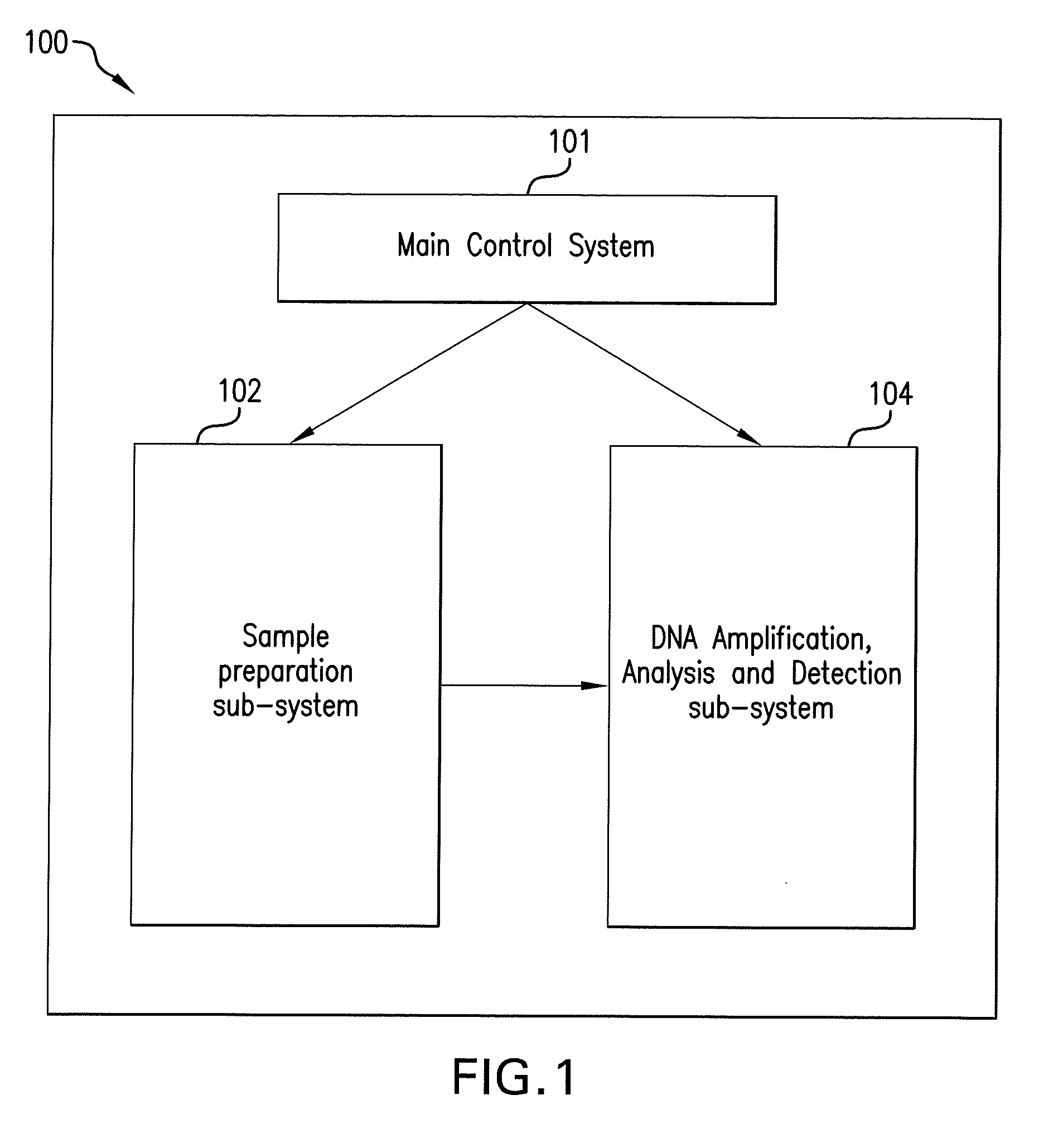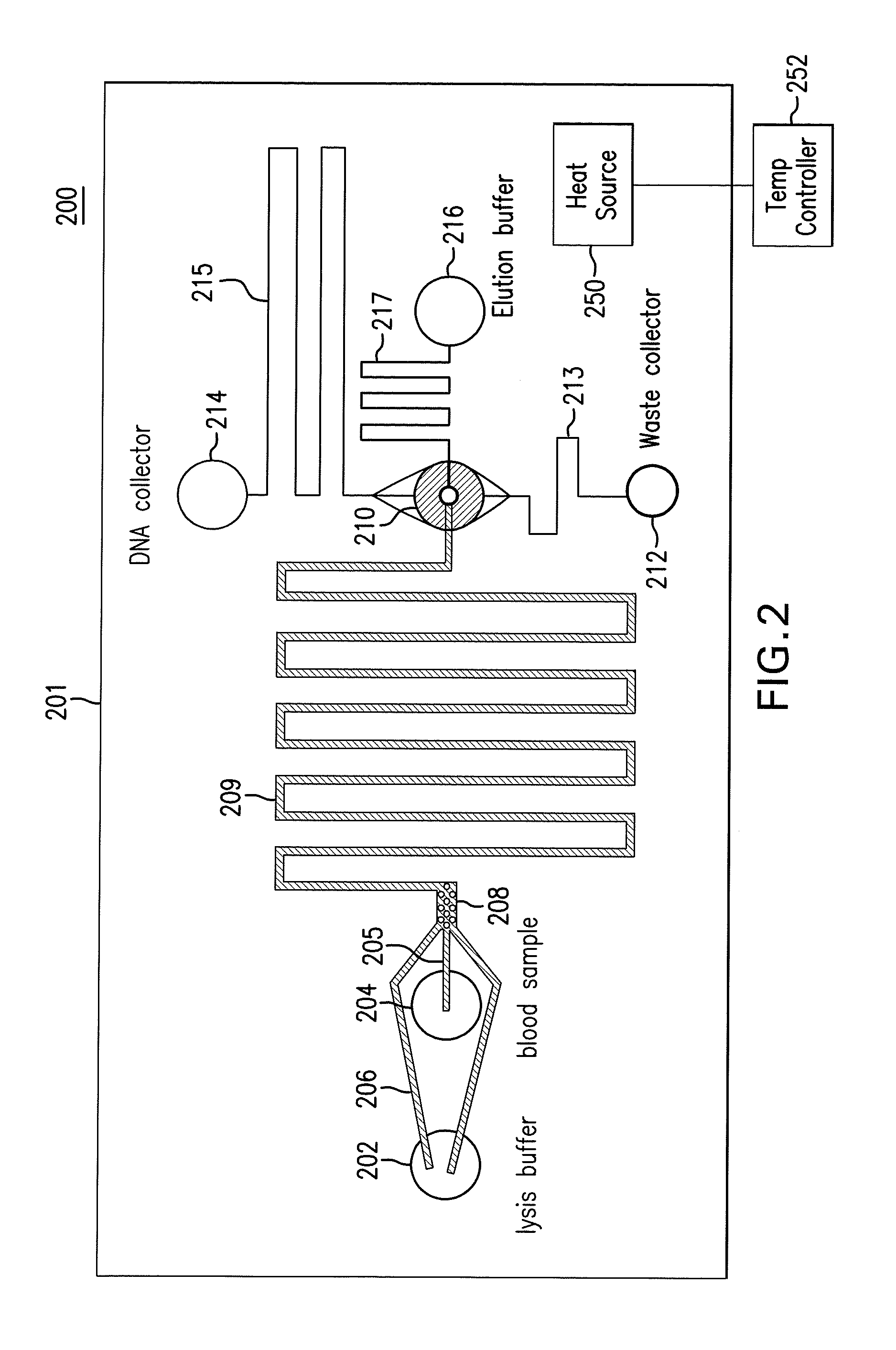Methods and Systems for Microfluidic DNA Sample Preparation
a microfluidic and dna technology, applied in the field of methods and systems for microfluidic dna sample preparation, can solve the problems of low efficiency, large volume of conventional dna sample preparation, long process time, etc., and achieve the effect of facilitating the removal of other contents
- Summary
- Abstract
- Description
- Claims
- Application Information
AI Technical Summary
Benefits of technology
Problems solved by technology
Method used
Image
Examples
Embodiment Construction
[0081]FIG. 1 illustrates a microfluidic DNA analysis system 100 according to some embodiments of the invention. As illustrated in FIG. 1, system 100 includes a DNA sample preparation sub-system 102 (a.k.a., “the sample preparation unit”), a DNA amplification, analysis and detection subsystem 104, and a main control system 101. The present application is primarily directed to the sample preparation unit 102 and earlier filed applications describe various embodiments of subsystem 104 (see e.g., U.S. Pat. Pub. Nos. 2008 / 0003588, 2008 / 0130971, 2008 / 0176230, and 2009 / 0053726, all of which are incorporated herein in their entirety by this reference).
[0082]FIG. 2 shows a schematic illustration of a component 200 of sample preparation unit 102 in accordance with an embodiment of the invention. More specifically, FIG. 2 shows a schematic illustration of a microfluidic DNA sample preparation device 200. As illustrated in FIG. 2, device 200 comprises a chip 201, a well 202 formed in chip 201 f...
PUM
| Property | Measurement | Unit |
|---|---|---|
| Temperature | aaaaa | aaaaa |
| Temperature | aaaaa | aaaaa |
| Temperature | aaaaa | aaaaa |
Abstract
Description
Claims
Application Information
 Login to View More
Login to View More - R&D
- Intellectual Property
- Life Sciences
- Materials
- Tech Scout
- Unparalleled Data Quality
- Higher Quality Content
- 60% Fewer Hallucinations
Browse by: Latest US Patents, China's latest patents, Technical Efficacy Thesaurus, Application Domain, Technology Topic, Popular Technical Reports.
© 2025 PatSnap. All rights reserved.Legal|Privacy policy|Modern Slavery Act Transparency Statement|Sitemap|About US| Contact US: help@patsnap.com



